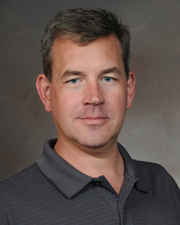
Michael C. Lorenz, Ph.D.
- 教授
Biography
Dr. Lorenz is a native of Atlanta whose first research experience in infectious diseases was at the Centers for Disease Control and Prevention studying malaria and HIV. He received his B.A. in Biochemistry and Cell Biology from Rice University. He then joined the Ph.D. Program in Cellular and Molecular Biology at Duke University, studying signaling pathways that regulate differentiation in the model yeastSaccharomyces cerevisiaein the laboratory of Dr. Joseph Heitman.
Dr. Lorenz began research inCandidawith Dr. Gerald Fink at the Whitehead Institute for Biomedical Research in Cambridge, MA. He has been a member of the Department of Microbiology and Molecular Genetics faculty at UTHealth Houston’s McGovern Medical School since 2003.
Education
- Postdoctoral Fellow
- MIT Whitehead Institute
- Ph.D.
- 杜克大学,1997年
Research Information
Understanding the molecular basis of fungal infections
传染病是微生物学最具挑战性的方面之一。他们对人类健康的损失仍然巨大,新兴的耐药性使我们有在治疗这些疾病的一个世纪进步的风险。尽管引起了各种疾病,但疾病范围从轻度和常见到威胁生命的感染,每年导致一百万多人死亡,但真菌通常被忽视为传染性药物。Candida albicansis the most important fungal pathogen, as it is capable of infecting virtually any body site, including the mouth and throat (oral thrush) and the genital tract (vaginal yeast infections), but our primary interest is in the life threatening infections that occur mostly in hospitalized patients with weakened immune systems. Increasingly frequent, about 40% of those who get disseminated candidiasis will die, making it as deadly as HIV/AIDS and MRSA in this country. Unlike these infections, however, patients acquire candidiasis from themselves:C. albicansis also a universal part of the human microbiota, existing harmlessly in most of us.
Healthy individuals are protected from candidiasis by their innate immune system and our lab studies the dynamic and fascinating interaction ofC. albicanswith phagocytic cells.C. albicansdramatically alters macrophage function, by inhibiting production of antimicrobial compounds like nitric oxide and remodeling the phagolysosome, eventually allowing the fungal cell to adopt an filamentous morphology and escape the phagocyte. We seek to understand how this important pathogen has adapted its metabolism, stress responses, and physiology to contribute to its ability to cause disease, with an ultimate goal of identifying ways to better diagnose and treat these infections.
Publications
Publication Information
Vylkova, S. and洛伦兹(M.C.)(2014)吞噬pH的调节Candida albicanspromotes hyphal morphogenesis and requires Stp2p, a regulator of amino acid transport.PLoS Pathog.10:e1003995. PMID: 24626429.
Graham, C.E., Cruz, M.R., Garsin, D.A., and洛伦兹(M.C.)(2017) TheEnterococcus faecalisbacteriocin EntV inhibits hyphal morphogenesis, biofilm formation, and virulence ofCandida albicans.Proc. Nat. Acad. Sci. USA114:4507-12. PMID: 28396417.
Danhof, H.A.*, Vylkova, S.*, Vesely, E., Ford, A.E., and洛伦兹(M.C.)(2016) Robust environmental alkalinization byCandida albicansduring growth on dicarboxylic acids.mBio7:e01646-16. PMID: 27935835.
Miramón, P. and洛伦兹(M.C.)(2016) The SPS amino acid sensor mediates nutrient acquisition and immune evasion inCandida albicans.细胞。Microbiol。18:1611-24.
Danhof, H.A. andLorenz., M.C.(2015)Candida albicans ATOgene family promotes neutralization of the macrophage phagolysosome.Infect. Immun.83:4416-26. PMID: 26351284.
Priest, S.P. and洛伦兹(M.C.)(2015). Characterization of virulence-related phenotypes inCandidaspecies of the CUG clade.Eukaryot. Cell.14:931- 40. PMID: 26150417.